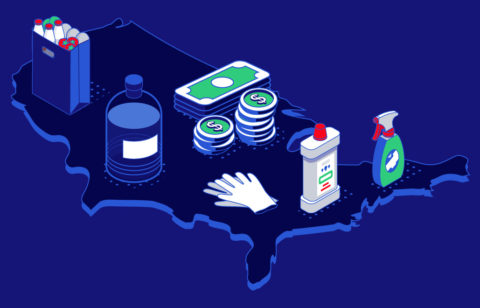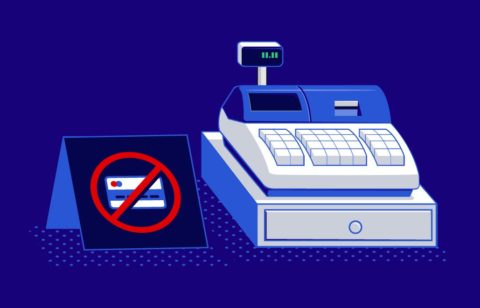It’s no secret: Americans aren’t saving enough for retirement. A 2018 survey by GOBankingRates.com found that a shocking 42% of respondents had saved less than $10,000 for retirement. With the future of Social Security perpetually in question, it’s critical for Americans to rein in their spending and begin putting more aside for retirement now.
To save money, it’s important to have an understanding of how you spend your money. Merely restricting your spending won’t last. A better approach is to target specific areas where you may be spending too much.
American Spending Habits
Americans love to spend. We’re a nation of consumers, and our economy depends upon it.
The problem is that whether we have the money saved or not, we love to buy the latest cell phones or TVs, go on vacations, and drive newer cars. Getting credit is quick and easy in America; if your credit isn’t good, there’s a sea of lenders willing to give you credit at higher interest rates. Even shortly after a bankruptcy, it’s possible to get credit; it’ll just cost more.
The GOBankingRates.com survey showed that American spending consists of a lot of discretionary items, things such as entertainment and other non-necessities to the tune of $5,339 per year on average. The survey also found certain factors that play a part in spending, such as age, with Millennials spending an average of $6,283 a year while Baby Boomers spent $4,196, as well as gender, with men outspending women $5,339 to $4,664 a year.
Trimming back discretionary spending will allow you to put more aside for your Golden Years. The best way to start is to look at where it’s going and where you can cut back.
Where Does It All Go?
It may feel like you have holes in your pockets where all your money drops out. The truth is that American spending has a lot to do with habits. Other than rent or mortgage, utilities, food, and necessities, Americans spend their excess cash on habits that they’ve developed throughout their adult lives.
The main culprit is dining out. The average American spends $2,167 per year on eating out, take-out, and delivery. That morning latté costs $718 a year. Rounding out the top non-essential items people spend toward are rideshares such as Uber, Lyft, and taxis; new clothes; alcohol; and entertainment such as concerts and sporting events. In all, these non-necessities add up to $5,339 per year. If you invested that, assuming a 7% return, that investment would grow to $78,944 in 10 years.
Cut Your Discretionary Spending
All work and no play make Johnny a dull boy. More than that, a budget that has no allowances for entertainment is one you won’t stick to for long. You need a break now and then; you need entertainment. Instead, try cutting your discretionary spending in half. Make eating out an event rather than something you do every Saturday night. Packing lunch from home, bringing your own coffee to work, and looking for free entertainment can help you cut your spending.
An added bonus is that the food we make at home has fewer carbohydrates, less sugar and less fat than what we eat in restaurants so while you’re saving money for retirement, you’re eating healthier, which is important for fighting off health issues and saving on medical bills.
Invest Wisely
Once you’ve cut out a portion of your spending, look at your 401k plan. Many employers will match your contributions into the 401k up to a specified percentage of your salary. If you’re not already contributing the maximum, you’re throwing away free money.
A certified financial planner can help you take control of your finances and come up with a realistic plan to save for retirement. Retirement savings isn’t as easy as sticking money into an account; make investments that use the number of years you have before you reach retirement to determine the risk level of your investments to yield the highest returns. Check out this article for more information on the benefits of using a professional financial planner.
Change Your Way of Thinking
To be successful at cutting your discretionary spending, you have to change your habits by changing your way of thinking. By looking at why you spend your money the way that you do, you can make adjustments that’ll allow more money to go into your retirement savings.
Need-based Spending Rather than Income-based
If you receive a raise or finally get your credit card debt paid off, it doesn’t mean that you have more to spend. Your needs haven’t changed, only your income.
Learn Patience
Take your time when making large purchases. Use that time to research the item for cost, quality, and value. Sometimes, after waiting to buy something, you’ll realize that you didn’t need it after all.
Don’t Worry about the Jones’
In the age of social media, it’s harder than ever to resist the need to “keep up with the Jones’.” People love to post pictures on social media of their expensive new “toys” or their McMansions for all to envy. The pictures you won’t see? The snapshots of their massive credit card bills, the letters from collection agencies, or the crew that just showed up to repossess their stuff.
Be Less Madonna and More Dalai Lama
Being a “Material Girl” will only keep you in debt. Taking a more Buddhist approach to your possessions will help you figure out what you truly need in life, and better yet, what you don’t. After all, they’re only things.
Spend for the Future; Don’t Pay for the Past
If you’re accumulating a lot of debt, you’re paying for the things you bought or did in the past. Wouldn’t it be better to save for something you’re going to buy or do in the future? It may seem like a simplistic approach, but it can be a liberating one, and you’ll save money in credit card interest, too.
You don’t have to become a penny-pinching miser to save enough money for your retirement. By cutting back in a few areas where you may be overspending, you can make investments now that will provide a bigger payoff in your later years.





